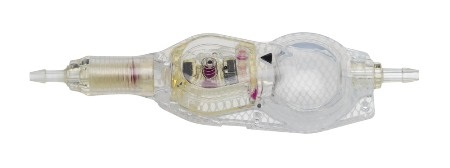Sep 22 2015
Codman Neuro has developed a new MRI-resistant programmable valve with eight different pressure settings, including a ‘virtual off’ setting, for the treatment of hydrocephalus, a neurological condition that affects more than one million children and adults in the United States. The announcement was made here at the Seventh Meeting of the International Society for Hydrocephalus and CSF Disorders. Codman Neuro is a global leader in neurosurgery and part of DePuy Synthes Companies of Johnson & Johnson.

Hydrocephalus is characterized by an excessive accumulation of cerebrospinal fluid (CSF) that causes the ventricles of the brain to enlarge and the pressure inside the head to increase, which can lead to a range of harmful effects including damage to brain tissue and impairments in cognitive and motor function. The most common treatment for hydrocephalus is the surgical implantation of a valve or shunt, a flexible tube placed into the brain to divert excess CSF from the head to the abdomen.
The new CODMAN CERTAS® Plus Programmable Valve enables neurosurgeons to pre-operatively choose from eight low-to-high pressure settings to control the rate of drainage of CSF from the brain. The valve pressure can be read and adjusted non-invasively or even turned ‘virtually off’ (valve pressure consistently above 400 mmH20) any time after implantation using the CODMAN CERTAS Tool Kit, which employs magnetic force to change settings.
The CODMAN CERTAS Plus Programmable Valve is resistant to unintended changes in the valve setting in a 3 Tesla magnetic resonance imaging (MRI) system and may be integrated with Codman Neuro’s BACTISEAL® Antimicrobial Catheter and/or SIPHONGUARD® Anti-Siphon Device, depending on surgeon preference.
Codman Neuro has been advancing the care of hydrocephalus patients for nearly 17 years. In addition to the CODMAN CERTAS Plus Programmable Valve, Codman Neuro offers the CODMAN® HAKIM® Programmable Valve, a shunt with18 settings for when physicians require even finer adjustments to intracranial pressure.